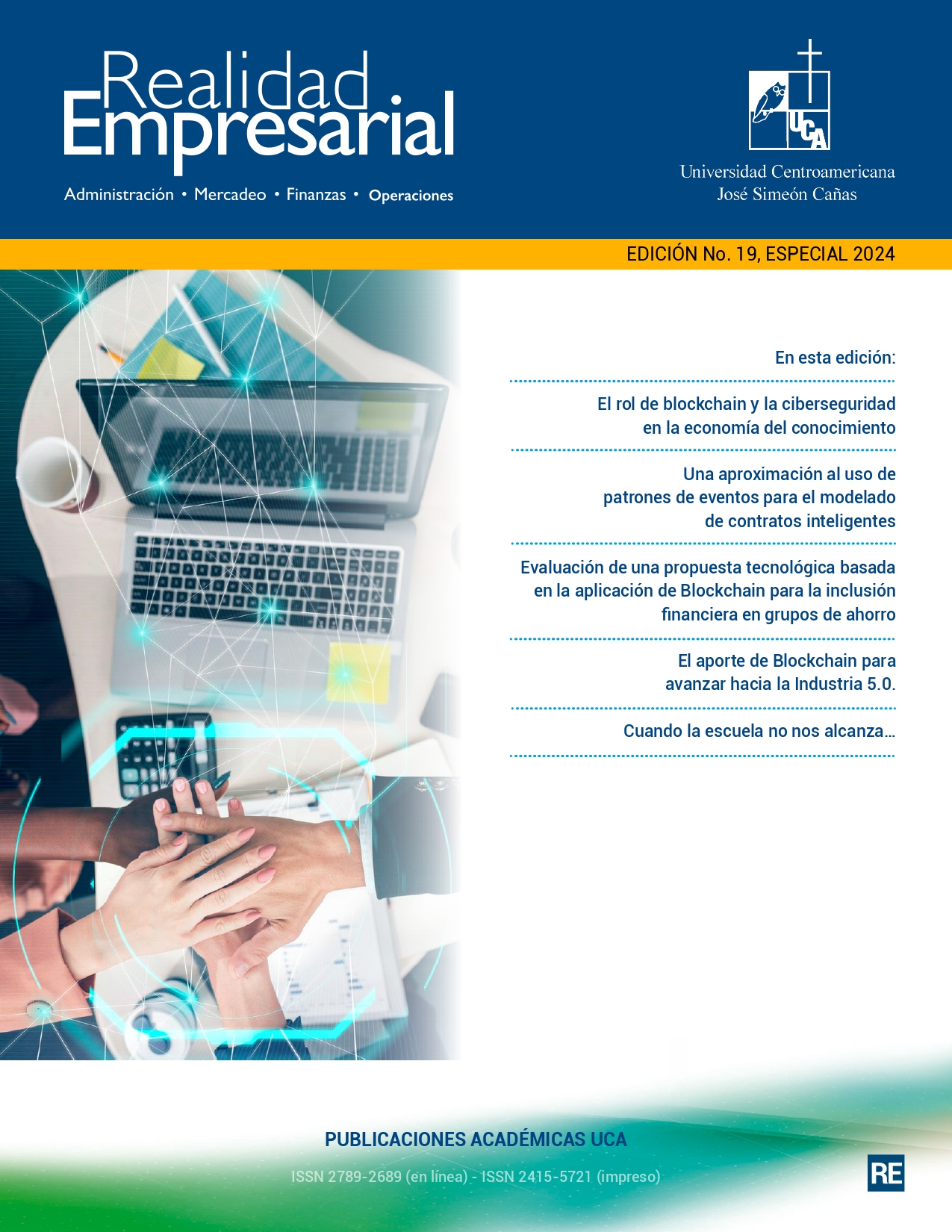Abstract
Financial inclusion has boomed with various initiatives and community-based entities, such as savings groups, seeking to offer alternatives to sectors underserved by traditional financial institutions. The digitisation of traditional services has revolutionised social life by democratising access to a wide range of services, including investments, credit, financing and savings, thanks to decentralised technologies. Although blockchain technology is in its early stages of mass adoption, it has already demonstrated efficiency in solving problems linked to financial inclusion through various protocols, presenting a diversity of options and solutions with different approaches and complexities. The philosophy behind blockchain implementations is based on fundamental principles: transparency, immutability, efficiency and cost reduction by eliminating intermediaries. These values are reflected in the technical components of blockchain networks, such as consensus protocols and transaction models. Web 3.0 solutions, by adopting decentralised technologies, have the potential to empower underbanked and geographically remote savings communities, enabling them to achieve financial autonomy and improve their quality of life. Therefore, this paper addresses theoretical foundations that allow the design of a base network applied to a community savings and loan group of the economic initiative promoted by the CLC Solidarity Service Association.
References
Ast, F. (05 de diciembre de 2021). Glosario Básico sobre Bitcoin y Blockchain. https://mirror.xyz/federicoast.eth/Ln8L1cvBj8aB92iUDpw02K1HDv-RTX2AKzjh_VTR-aI
Banco Central de Reserva de El Salvador. (2022). Resultados de encuestas sobre el estado de las inclusión y educación financiera en El Salvador. Noticias BCR. Portal de Transparencia. https://www.bcr.gob.sv/2022/11/30/banco-centralde-reserva-presenta-resultados-deencuestassobre-el-estado-de-la-inclusion-y-educacionfinanciera-en-el-salvador/
Beltran (29 de marzo de 2018). Web3 Design Principles. Medium. https://medium.com/@lyricalpolymath/web3-design-principlesf21db2f240c1
GuerreroBinance Academy (31 de enero de 2023). ¿Qué es el trilema de la blockchain?. https://academy.binance.com/es/articles/what-is-theblockchain-trilemma
CERTIK (7 de abril de 2022). What is DApp Security?. Technology.https://www.certik.com/resources/blog/7yyxvKzKtscATQgggnkDho-what-isdapp-security
Chunmian, G., Haoyue, S., Jiang, J., & Xiaoying, X. (2022). Investigating the demand for blockchain talents in the recruitment market: evidence from topic modeling analysis on job postings. Information & Management, 59(7), 103513.
Ethereum (02 de octubre de 2024). ¿Qué es la capa 2) Ethereum.org. https://ethereum.org/es/layer-2/
Fisher, I. (1930). The Theory of Interest : As Determined by Impatience to Spend Income and Opportunity to Invest It. Macmillan Compañy.https://fraser.stlouisfed.org/title/theoryinterest-6255?page=3
García (2023). Investigación exploratoria, descriptiva, explicativa y correlacional. Repositorio institucional de la Universidad Autónoma del Estado de México. http://ri.uaemex.mx/bitstream/handle/20.500.11799/108148/secme-1623_1.pdf;sequence=1
Guerrero, M. (2016). La investigación cualitativa. INNOVA Research Journal, 1(2) 1-9. https://doi.org/10.33890/innova.v1.n2.2016.7
Hyperledger Foundation (s.f.). Hyperledger Foundation GitHub. https://hyperledger.github.io/
Marcano, A., Cartaya, S., Pacheco, H. & Méndez, W. (2015). Estimación de pesos ponderados de variables para generar mapas de susceptibilidad a movimientos en masa a través de la Evaluación Espacial Multicriterios. Terra Nueva Etapa, Vol. XXXI (50) 55-80. https://www.redalyc.org/articulo.oa?id=72142329004
Moeda (2023) “Moeda – DeFi” https://moeda.finance/
Política Nacional de Inclusión Financiera para El Salvador [PNIF-SLV] Reformada. 18 de octubre de 2019 (El Salvador).
Real Academia Española. (2024). Diccionario de la lengua española: Observación. https://dle.rae.es/observaci%C3%B3n
Redacción APD. (12 de septiembre de 2024). Blockchain: ejemplos y aplicaciones que está transformando el mundo. APD España. https://www.apd.es/aplicaciones-blockchain/
Roca, R. (2008). Teorías del consumo y el ahorro. Macroeconomía Avanzada, Universidad Mayor de San Marcos y Pontificia Universidad Católica del Perú. https://www.researchgate.net/publication/228779336_Teorias_del_Consumo_y_el_Ahorro
Onder, S. (01 de noviembre de 2022). Blockchain can drive financial inclusion and climate resilience. Mercy Corps. https://www.mercycorps.org/blog/blockchain-financial-inclusion-climate-resilience
Simões, C. (12 de mayo de 2022). ¿Qué es una DaPP y en qué se diferencia de una aplicación “normal”? ITDO. https://www.itdo.com/blog/que-es-una-dapp-y-en-que-se-diferencia-deuna-aplicacion-normal/
Wegrzyn, K. & Wang, E. (19 de agosto de 2021). Types of blockchain: public, private, or something in between Foley & Larder LLP. https://www.foley.com/en/insights/publications/2021/08/typesof-blockchain-public-private-between
Viera, G (2017). Ley para facilitar la Inclusión Financiera en El Salvador: regulación de nuevos servicios financieros digitales. https://cdn.inclusionfinanciera.gob.sv/wp-content/uploads/2021/02/Ley-para-facilitar-la-Inclusion-Financiera.pdf
World Bank Group. (2024). Digital financial inclusion. WBG. https://www.worldbank.org/en/topic/financialinclusion/publication/digital-financialinclusion

This work is licensed under a Creative Commons Attribution-NonCommercial-NoDerivatives 4.0 International License.
Copyright (c) 2024 Claudia Vanessa Duran León, Julio Noe Flores Gutiérrez, Ada Mabel Gutiérrez Hernández






